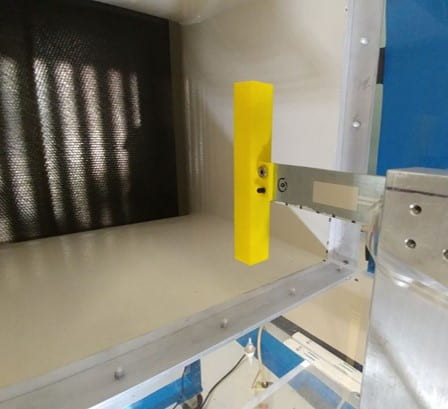Research
Flow-Induced Vibration of Structures with Broken Symmetry
We work on projects related to Flow-Induced Vibration (FIV) of structures with broken symmetry immersed in flow. The majority of the existing studies have been conducted for symmetric systems; i.e. systems with symmetric geometries, boundary conditions and wakes. However, in many real-world applications such as mooring lines used to stabilize the offshore wind turbine platforms, FIV is observed in systems with asymmetry. Our research focuses on studying how different asymmetries can change the FIV response of the system. Read more
 Vortex shedding patterns in the wake of the triangular prism at an angle of attack of α = 55◦ and at reduced velocity of U*=20.7. |
Energy Harvesting from Flow-Induced Vibration of Inherently Nonlinear Structures
We study energy harvesting from flow-induced vibration (FIV) of inherently nonlinear structures. Flow-induced vibration based energy harvesting from external sources available in the environment such as wind or marine currents is a topic of broad and current interest. Our study focuses on the impact of nonlinearity on the level of energy harvested in the flow-induced vibration-based energy harvesters. Read more

Cantilevered beam holding a prism at the tip is placed in the test-section of a subsonic wind tunnel. piezoelectric transducer is used for vibration to electric energy conversion mechanism.
Flow-Induced Vibration of Cluster of Flexible Cylinders in Tandem Arrangement
Closely spaced cylinder arrays immersed in flow are susceptible to Flow-Induced Vibration (FIV). In such systems, interaction between individual cylinders in addition to interaction between the fluid flow and structure adds to the complexity of system. Our research focuses on understanding the physical mechanisms responsible for FIV of arrays of cylinders, which compared to an isolated cylinder have the possibilities for greatly increased FIV response. Read more


